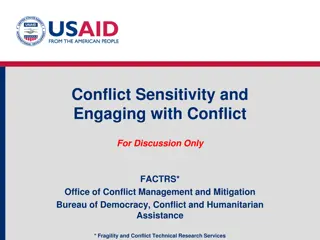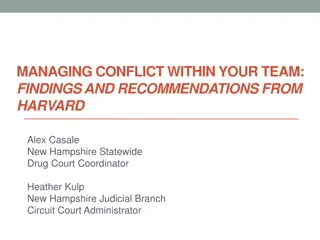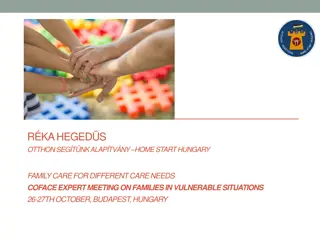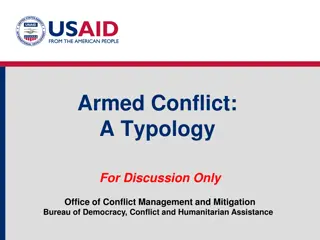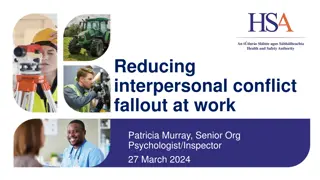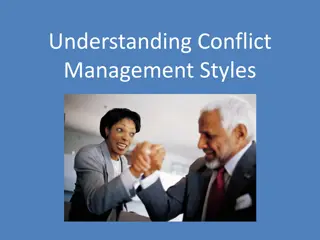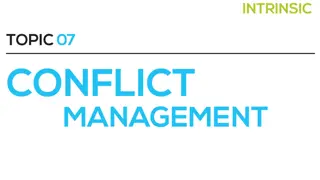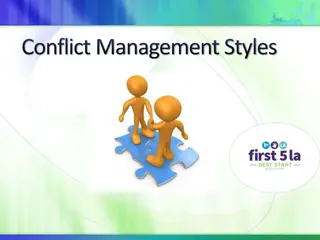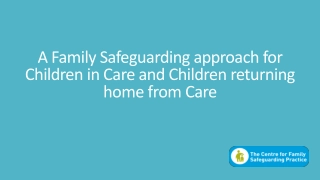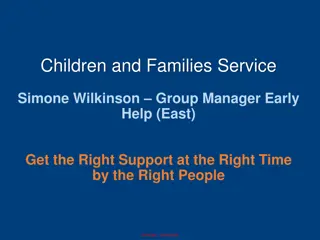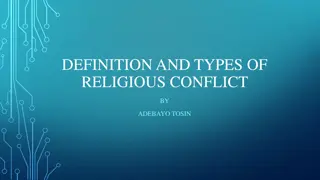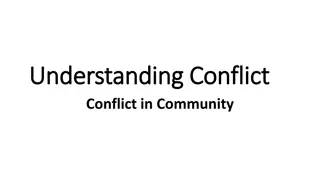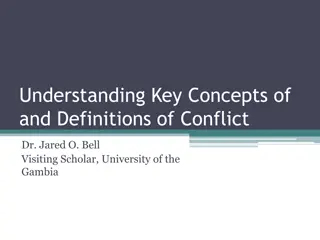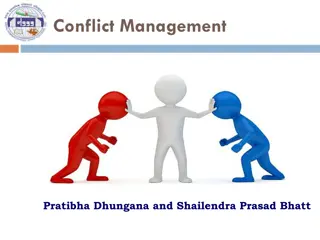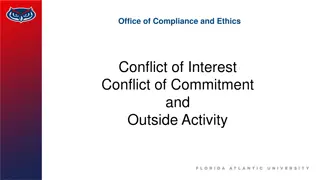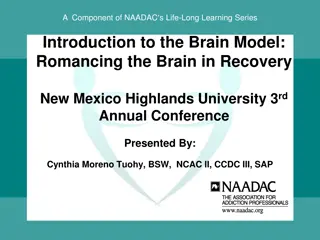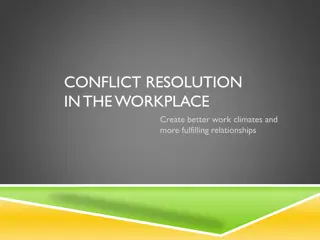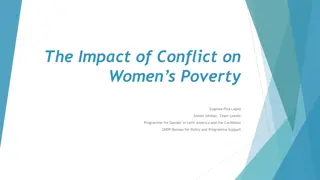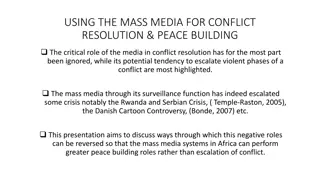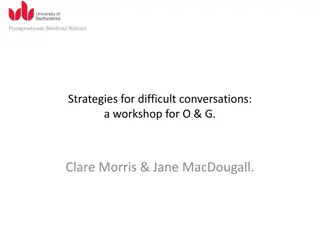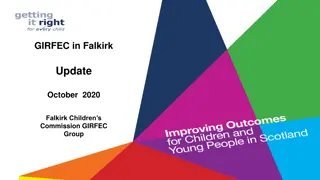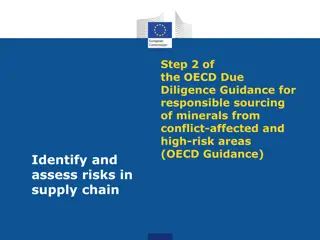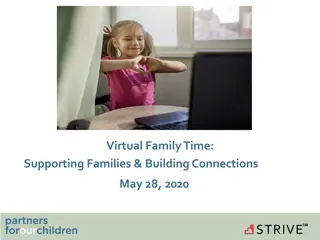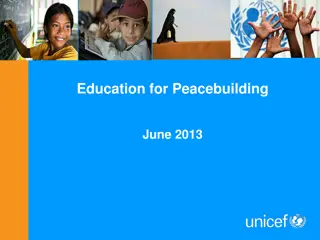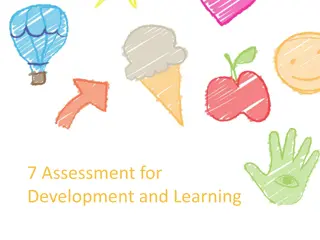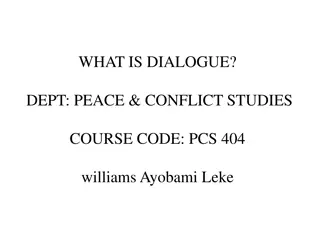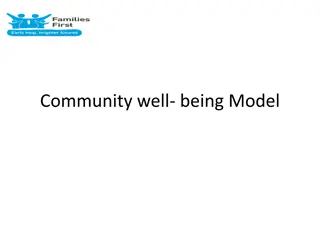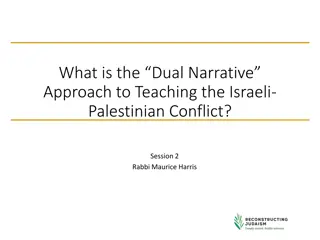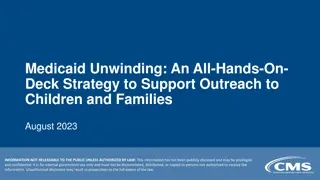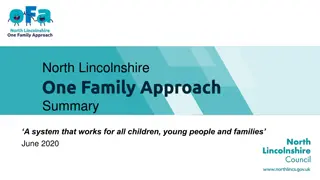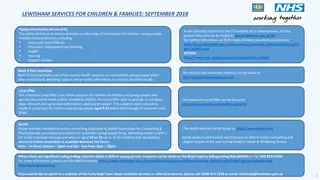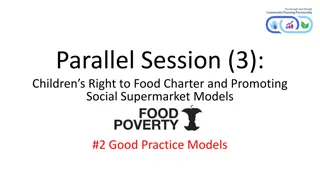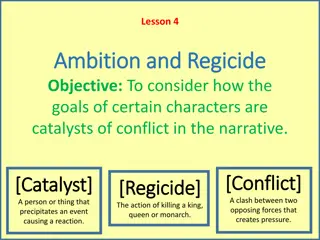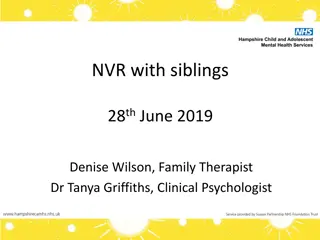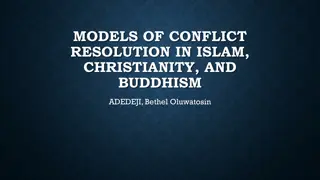Understanding Children Resisting Contact in High Conflict Families
Child Resisting Contact [CRC] often occurs in high conflict cases where one parent undermines the child's relationship with the other parent. The judicial responses to this issue have limits due to the complexities and challenges involved, such as conflicting versions of events and lack of appropriate resources. Alienation and abuse post-separation are common themes, with claims of abuse sometimes met with counterclaims of alienation. Parental Alienation Syndrome, while studied by Gardner, is not without controversy in its proposed responses.
Download Presentation

Please find below an Image/Link to download the presentation.
The content on the website is provided AS IS for your information and personal use only. It may not be sold, licensed, or shared on other websites without obtaining consent from the author. Download presentation by click this link. If you encounter any issues during the download, it is possible that the publisher has removed the file from their server.
E N D
Presentation Transcript
Children Resisting Contact & High Conflict Families: Recognizing the Limits of Law Prof. Nicholas Bala Faculty of Law, Queen s University, Canada bala@queensu.ca International Society of Family Law Amsterdam, NL July 26, 2017
Themes Context: Child Resisting Contact [CRC]: o High conflict cases often have with parents not supporting child s relationship to other parent o If conflict continues, children often start to resist contact o Range of reasons: alienation to justified estrangement o Often best seen as a family functioning problem, but also to recognize alienation - one parent is more responsible Judicial Responses to Children Resisting Contact Limits of the Law o Best legal responses involve active case management to educate parents & facilitate change o Legal remedies are very blunt hold accountable for breach of orders & enforce with possibility of custody reversal 2 o Lawyer s role: firefighter or arsonist?
Complexity & Challenges Conflicting versions of events o Parent-child interaction very difficult for court to assess Often responsibility of both parents o hybrid cases Personality disordered and high-energy litigants o manipulation of court orders o often self-represented o Recusal motions Concurrent Proceedings o Family & child protection &/or criminal Lack of appropriate resources o Parties lack resources and/or professionals lack understanding 3 Lack of good social science research
Alienation & Abuse Post-separation parents quickly learn about concepts like alienation (friends, internet, advisors etc.) o may use but often misuse Claims of child & spousal abuse met with counterclaims of alienation Each may be totally or partially true, exaggerated or unfounded o relatively high rate of unfounded allegations of abuse in context of separation and atypical role for child protection 5
Parental Alienation Syndrome: Gardner (1987) Although Gardner did significant work, parental alienation is not a syndrome of a child, and children rejecting one parent often has complex aetiology. 6 Further Gardner criticized for proposed responses, including juvenile detention & his analysis highly gendered Richard Gardner American Psychiatrist (1931-2007) BALA, ISFL 2017
Alienated Child Janet Johnston & Joan Kelly, 2001 Not a psychiatric syndrome, but requires multi-factoral assessment 7 Alienated child is one who freely and persistently expresses unreasonable negative feelings and beliefs (such as anger, hatred, rejection, and/or fear) toward a parent that are disproportionate to their actual experienceof that parent. Dynamic of many factors: both parents, vulnerability of child, siblings, third parties, professionals, adversarial system, etc.
Factors contributing to & sustaining parent-child contact problems Adapted from Kelly & Johnston, 2001; By Fidler & Bala Humiliating Separation Personality of Aligned Parent Aligned Parent s Negative Beliefs, Behaviors Intense Marital Conflict Before/After Separation Child s Response Child s Vulnerability Sibling Relationships Lack of Functional Coparenting Rejected Parent s Reactions Personality of Rejected Parent Divorce Conflict & Litigation Aligned Professionals (Education, Health, Legal) Extended Families 8 BALA, ISFL 2017
Strained Parent-Child Relationships: A Continuum ALIENATION - Child shares FP s attitudes, behaviors; unreasonable/disproportionate reaction; previously had good relationship with RP; Without PABs of FP, child would not have rejected other parent Alienation HYBRID PABs by FP & parenting difficulties by RP, exaggerated by child & FP; RP may be reactive to child s resistance, bad behaviour Hybrid JUSTIFIED REJECTION Reaction primarily independent of FP; due to underdeveloped relationship with RP, exposure to IPV, uncontrolled mental illness, substance abuse, emotional abuse, significantly compromised parenting & FP may overreact, project own fears, anxieties, anger onto child, distort, exaggerate; protective to the point of compromised parenting Justified Rejection ALIGNMENT Divorce-specific reasons (eg, anger re ending marriage, affair, new partner); results in loyalty conflict but not total rejection. FP supports relationship with other parent Alignment with one parent while contact continues with other parent Affinity to one parent; AFFINITY Preference for one parent, but no rejection of other; age or gender- related reasons Strong attachment to both parents 9 BALA, ISFL 2017
Parental Alienating Behavior(PAB) In high-conflict cases, PAB often exhibited by both parents; yet not all children become alienated o Some continue relationship with both parents despite PAB What alienating parents do: o directly and indirectly denigrate or instill fear o arrange conflicting activities; talk about activities missed o induce guilt about visits, good times with other parent o make unfounded abuse allegations report to CPS o Do NOT support relationship to other parent: Tell child: It s up to you effectively devalues importance of relationship with other parent supports right of child
Alienated Child Even abused children usually want a relationship with both parents, and rejection of parent by a child is usually reflection of conflict, if not alienation Less common in younger children, usually starts during pre- adolescent or adolescence (9-13 years) due to cognitive maturation Rigid thinking (like FP); black & white views; idealization/devaluation May say they are fearful of RP, but actually not afraid. Rather child is belligerent, aggressive, unkind Likely to reject extended family, friends, even pets 11
Negative Effects of Alienation (Saini, Johnston, Fidler, Bala, 2016; Baker, 2013) Alienation is emotionally harmful to children o Loss of contact with parent & extended family o Guilt, self hatred, self-esteem issues o Continued unconscious identification with rejected parent o Child may come to believe unfounded abuse allegations Behavioral disturbances in alienated children o Aggression & conduct disorders o Poor impulse control Alienating parent is often personality disordered: perception of reality can be distorted when emotionally aroused, blames the target & will not respond rationally to court orders Research suggests long term negative effects into adulthood, including depression, intimate partner difficulties
Role of Lawyers & Adversarial System Win-lose nature of adversarial process may encourage personality disordered parents to seek vindication Letters & court documents may inflame anger 13 Lawyers for parents may increase tensions and help create unrealistic expectations But good lawyers attempt to promote settlement & educate parents about human & social costs of alienation and litigation o For favoured parent, lawyer to encourage settlement to take control and empower rather than leaving to judge o For rejected parent, encourage settlement to gain compliance Mental health & child protection professionals may also become allied and unhelpful to child
14 Prevalence
Prevalence of Alienation (Saini, Johnston, Fidler, Bala, 2016) Alienation is more likely to occur in highly conflicted families involved in litigation rather separated parents with no involvement with the courts Estimates of the presence of alienation in custody-disputing samples range from 10% to 60 % depending on o sample setting (e.g all cases, cases where report) 15 o definitions used to establish the presence of alienation o methods for data collection Both mothers and fathers can be alienated from their children, but most successful alienation is perpetrated by the parent with custody or primary care of children (most commonly the mother)
Who Alienates Children? (Slightly more Moms, but Dads make more unfounded claims) (Australia, 1997-2010, Bala, 2011; see also Bala, Hunt & McCarney, 2010) 16
Usually residential parent who successfully alienates Australia: 1997 -2010 17
Legal Responses (often more variation between judges than between jurisdictions) 18
Assessment & Differential Response Valuable to have early assessment by an experienced, court-appointed mental health professional with training in alienation, abuse and domestic violence Lack of professionals and cost Lack of valid/reliable assessment tools Differential legal and clinical interventions will depend on: o nature of parent-child contact problem o intensity, frequency & duration of the parental conduct o Willingness of each parent to accept guidance and demonstrate ability to change behaviour, stop parental alienating behaviours and comply with orders o Resources 19
Judges Educating & Exhorting Parents Comments at case conferences o get parents to focus on welfare of children o Short & long term o How do you think it will be if your child has a wedding? o How can you help your child to have a good relationship with the other parent? o warn of harm and costs of their conflict o warn of potential for custody reversal. Judicial Orders o may include orders for no derogatory comments made by one parent against the other to the children enforcement is a problem 20
Court gives greater role to Rejected Parent Compensatory contact time Court increases time with RP Shift from custody by FP to joint custody But how to enforce?? 21
Court ordered therapy & caveats Judicial push towards therapy may have positive effects Need to involve child & both parents in reunification therapy o Therapy for child alone not likely to be effective Important to have provision for reporting to court about engagement with counseling Does counselor have experience & training with issue of children resisting contact? Expect behavioral changes (more contact) within 3- 6 months or likely will not happen There are intensive short residential programs that can be provided in 22 o Assist in custody transition (Family Bridges) o Work with both parents and children (Overcoming Barriers) In more severe alienation cases, no positive outcome for therapy without custody reversal o Personality disordered FP will undermine therapy
Contempt Contempt is a blunt instrument for promoting better parenting suspend sentencing for compliance behavioural conditions rather than fine or jail if flagrant & persistent breach, jail is possible maintain focus on interests of child Threat of imprisonment may be more important, does move some parents Godard v Godard Ontario Court of Appeal - 2015 No doubt, it may be difficult to comply with an access order, especially as children get older. Parents are not required to do the impossible in order to avoid a contempt finding. They are, however, required to do all that they reasonably can 23 BALA, ISFL 2017
Police Enforcement - last resort Parent can call for police to enforce access order o In theory in most jurisdictions police obliged to enforce access orders, but in practice reluctant to do so o More willing to enforce if police enforcement clause o Such orders can be highly intrusive and may frighten children: an order of last resort Despite concerns, judge may conclude that without threat (or reality) of police enforcement, access will not occur. Focus should be on ensuring that parent complies with order (requires child to go on visits), not on forcing adolescent child to comply L. (N.) v. M. (R.R.), 2016 ONSC 809, per Perkins J
Variation of Custody Must demonstrate variation in the child s best interests Compare parenting capacities, including step-parent Degree of harm from remaining with emotionally abusive (or enmeshed) alienating parent C.L.J. v. J.M.J., [2006] NSJ 171, the judge decided left with no alternative but to take the drastic step of changing custody. Considering the repercussions of this remedy, she remarked: I am fully aware that a change in custody will cause great emotional anxiety for [the son], but nothing else has worked The only way to ensure that he will have a relationship with both of his parents, which he needs and deserves, is to change custody to [the father]. Judicial reluctance, but with growing knowledge judges seem more receptive if severe alienation: may need to combine with suspension of contact with alienating parent court may suggest transitional counselling (Family Bridges, Warshak) 25 BALA, ISFL 2017
Child Protection Services in CRC Cases (Houston, Bala & Saini, 2018) CPS increasingly involved in high conflict and Child Resisting Contact cases o parents in high conflict cases increasingly involve CPS 26 o parents may make unfounded allegations of abuse or neglect against former partners, step-parents etc., but also founded allegations o growing recognition that high conflict is emotionally abuse o preferable for agency to work with both to reduce conflict o usually each parent alone would be adequate o investigative services and possibility of foster care o in extreme cases agency should consider removal from both o Need for greater CPS commitment as this is a form of emotional abuse
Other legal responses Legal cost sanctions Possibility of effect on spousal support (Ont) or even child support (NY) Tort possible in some jurisdictions (not Canada) Criminal Offence to alienate child (Mexico and proposed fror Brazil)
Time Paradox & Challenge Crucial Role of TIME Time is the Enemy! early response and avoid delay child s resistance may increase over time Alienation cases require early intervention, when evidence is limited: But it takes TIME to figure it out and judge to be confident Case management judicial continuity Judge gets knowledge of dynamics of the case gains credibility & respect of parties Judicial continuity with clear orders & consequences can helps promote good behaviour even from personality disordered 28
When to stop trying to enforce Stress to child of enforcement in high conflict cases, esp if child resisting Challenge of enforcement with determined adolescent If severe alienation, enforcing access may not be in child s interests Possibility of supervised final visit mode for continuing communication Significant incidence of spontaneous reunion in late adolescence or adulthood no guarantee 29 29 BALA, ISFL 2017
References Baker (2010). Adult recall of parental alienation in a community sample: Prevalence and associations with psychological maltreatment, J Divorce and Remarriage, 51, 16-35. Baker & Sauber (Eds.) (2013). Working With Alienation Children & Families: A Clinical Guidebook. NY: Routledge: Taylor, Frances. Bala, Hunt & McCarney, Parental Alienation: Canadian Court Cases 1989 2008 (2010) 48 Family Court 162- 177. Bala, Birnbaum & Martinson, Differentiated Case Management for Family Cases: One Judge for One Family (2011), 26 Canadian Journal of Family Law 339-394. Bala & Herbert (2016). Children resisting contact: What s a Lawyer to do? Can Fam Law Quarterly, vol. 36, 1-56. Fidler & Bala (2010). Children resisting post-separation contact with a parent: Concepts, controversies & conundrums. Family Court Review, 48, 10-47. Fidler, Bala & Saini (2012). Children Who Resist Post-separation Parental Contact: A Differential Approach For Legal And Mental Health Professionals. American Psychology-Law Book Series. Oxford. 31
References (2) Fidler, B.J., Bala, N., & Hurwitz, H. (2013) Best practice guide: Responding to emotional harm of children in high conflict separation. Toronto: High Conflict Forum Fidnick, Kock, Greenberg & Sullivan (2011). Guidelines for court-involved therapy: A best practice approach for mental health professionals. Family Court Review, 49, 564-581. Greenberg, et al. (2012). Keeping the developmental frame: Child-centered conjoint therapy. Journal of Child Custody, 9(1-2), 39-68. Greenberg, L.R., Gould, J.W., Schnider, R.A., Gould-Saltman, D.J., & Martindale, D.A. (2003). Effective intervention with high-conflict families: How judges can promote and recognize competent treatment in family court. Journal of the Center for Families, Children and the Courts, 4, 49-65. Houston, Bala & Saini, Houston, Bala & Saini, Crossover Cases of High Conflict Families Involving Child Protection Services: Ontario Research Findings And Suggestions For Good Practices (in press, 2018: Family Court Review) Jaffe, Ashbourne & Mamo. (2010). Early identification and prevention of parent-child alienation: A framework for balancing risks & benefits of intervention. Family Court Review, 48(1),136-152. 32
References (3) Judge & Deutsch (Eds). (2016). Family-based interventions for children s resistance, rejection, alienation: Overcoming barriers and other clinical approaches. NY: Oxford University Press. Ludolph, P.S., & Bow, J.N. (2012). Complex alienation dynamics and very young children. Journal of Child Custody, 9, 153-172. Pruett, Deutsch, & Drozd (2016). When and how to do step ups in shared parenting arrangements. In L. Drozd, M. Saini & N. Olesen (eds). Parenting plan evaluations. 2ndedition. Oxford. Saini, Johnston, Fidler, & Bala (2016). Empirical studies of alienation. In K.F. Kuehnle & L.M. Drozd (Eds.), Parenting plan evaluations: Applied research for the family court. Second Edition. NY: Oxford Press. Saini, Drozd, Olesen (2017). Adaptive & Maladaptive gatekeeping behavior & attitudes: Implications for child outcomes after separation & divorce. FCR, 55(2), 260-272. Warshak, R.A. (2015). Ten parental alienation fallacies that compromise decisions in court and in therapy. Professional Psychology: Research and Practice. Advance online publication. http:/dx.doi.org/10.1037/pro000003. 33
Book co-authored by Bala Children Who Resist Post-separation Parental Contact: 34 A Differential Approach for Legal & Mental Health Professionals By Barbara Jo Fidler, Nicholas Bala & Michael A. Saini Paperback, 320 pages Jan 2013 Oxford University Press www.amazon.ca
Alienation Resources For Parents Richard Warshak www.warshak.com Divorce Poison Book Cover. DVD Cover for Welecome Back, Pluto. Divorce Poison: How to Protect Your Family from Bad-mouthing and Brainwashing Welcome Back, Pluto a DVD for children, teens, and parents Bill Eddy www.highconflictinstitute.com Don't Alienate the Kids! Raising Resilient Children While Avoiding High Conflict Divorce 35
Appendix SOME RED FLAGS FOR PARENTAL ALIENATION (Fidler) Proving parental alienation can be very difficult, and assessments must be done to ensure the child isn't turning their back on a parent with whom they used to have a loving relationship because of neglect, physical or sexual abuse. But here are some red flags: Constant bad-mouthing of one parent by the other. Spying on one parent by the child at the behest of the other. 36 Your ex-spouse starts giving the child the power to choose: "It's okay, Mom. I'm not coming home for the weekend. Dad has something more fun planned for me." There are no pictures that include you in your ex-spouse's house, which is meant to give the child the message that you no longer exist and they shouldn't be thinking about you. The child starts referring to you by your first name, rather than Mom or Dad. The other parent starts undermining your authority on your own time with the child such as, say, buying them a TV to put in their room at your house knowing you are opposed to that notion. It sets you up to be the villain and creates the sense your rules are dumb.
SOME RED FLAGS FOR PARENTAL ALIENATION (2) (Fidler) Interfering with communication: You get hung up on and your letters and gifts aren't passed on to your child. This is especially damaging for parents who live too far away for frequent face-to-face outings, making that contact especially important. Your child is complicit with your ex-partner in keeping secrets from you: He or she has booked a special trip with your child during your holiday time and then convinces the child there's no need to tell you until the last minute, for fear you'll interfere with the fun. 37 Your ex-spouse gets upset when the child has any kind of contact with you. The "classic example" is when both of you show up for your son's soccer game and it's clear your child is reluctant, or even afraid, to talk to you in the presence of the other parent. Your child is being told highly personal information about you, aimed at diminishing you in their eyes: "Mommy did drugs in high school." "Your dad is too small." Comments aimed at making the child feel angry with the one parent or feel sorry for the other.



